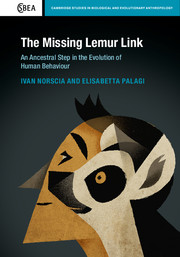Book contents
- Frontmatter
- Dedication
- Contents
- List of contributors
- A message from Jane Goodall
- Foreword
- Preface by the authors
- Acknowledgements
- Part I Communication: from sociality to society
- 1 Who are you? How lemurs recognise each other in a smell-centred world
- 2 What do you mean? Multimodal communication for a better signal transmission
- 3 A vertical living: sexual selection strategies and upright locomotion
- Part II How conflicts shape societies
- Part III Why lemurs keep in touch
- Part IV Closing remarks
- Looking back to the future – Michael Huffman
- Index
- References
3 - A vertical living: sexual selection strategies and upright locomotion
from Part I - Communication: from sociality to society
Published online by Cambridge University Press: 05 May 2016
- Frontmatter
- Dedication
- Contents
- List of contributors
- A message from Jane Goodall
- Foreword
- Preface by the authors
- Acknowledgements
- Part I Communication: from sociality to society
- 1 Who are you? How lemurs recognise each other in a smell-centred world
- 2 What do you mean? Multimodal communication for a better signal transmission
- 3 A vertical living: sexual selection strategies and upright locomotion
- Part II How conflicts shape societies
- Part III Why lemurs keep in touch
- Part IV Closing remarks
- Looking back to the future – Michael Huffman
- Index
- References
Summary
Could our vertical posture have influenced our sexual signals?…
Virtually all the sexual signals…are on the front of the body – the facial expressions, the lips, the beard, the nipples, the areolar signals, the breasts of the female, the pubic hair, the genitals themselves…The frontal approach means that the in-coming sexual signals and rewards are kept tightly linked with the identity signals from the partner.
Desmond Morris, 1967Upright habits and their impact on sexual signalling
In a number of animal species, it is possible to observe that males and females strongly differ in specific morphological and/or behavioural traits. This phenomenon, called dimorphism, can be largely observed in primates showing male–female differences in parental investment, growth and developmental pattern, body and canine size, scent glands and scent marking behaviour, vocalisation and visual ornaments (e.g., skin colours, flanges and fur). Such sexually dimorphic features are defined as ‘secondary’ because they are under the hormonal control of primary sexual characters (reproductive organs). Therefore, secondary traits are not primarily involved in the production of offspring. Not only do they not appear to promote the survival of individuals but sometimes they appear to be detrimental to the animal which possesses them; for example, colourful ornaments (such as the notorious peacock tail) can increase animal visibility and predation probability and, consequently, reduce the chances of survival.
Since secondary sexual traits do not confer advantages or produce disadvantages, their evolutionary permanence is in apparent contrast with the classic natural selection theory proposed by Darwin in the Origin of Species (1859). Why have secondary sexual traits been selected, then? To explain this paradox, Darwin (1871) developed the theory of selection in relation to sex (sexual selection) which pivots around the fact that secondary sexual traits confer an advantage with respect of acquiring a mate by intimidating rivals and/or by attracting mates. In this respect, the race to maximise offspring production – promoted by sexual selection – is as important as the race to maximise survival chances – promoted by natural selection. According to a convincing recent theoretical synthesis, sexual selection is part of natural selection (Clutton-Brock, 2004) intended as a process aimed at increasing an animal's chance of surviving and producing the highest number of offspring.
- Type
- Chapter
- Information
- The Missing Lemur LinkAn Ancestral Step in the Evolution of Human Behaviour, pp. 54 - 74Publisher: Cambridge University PressPrint publication year: 2016

